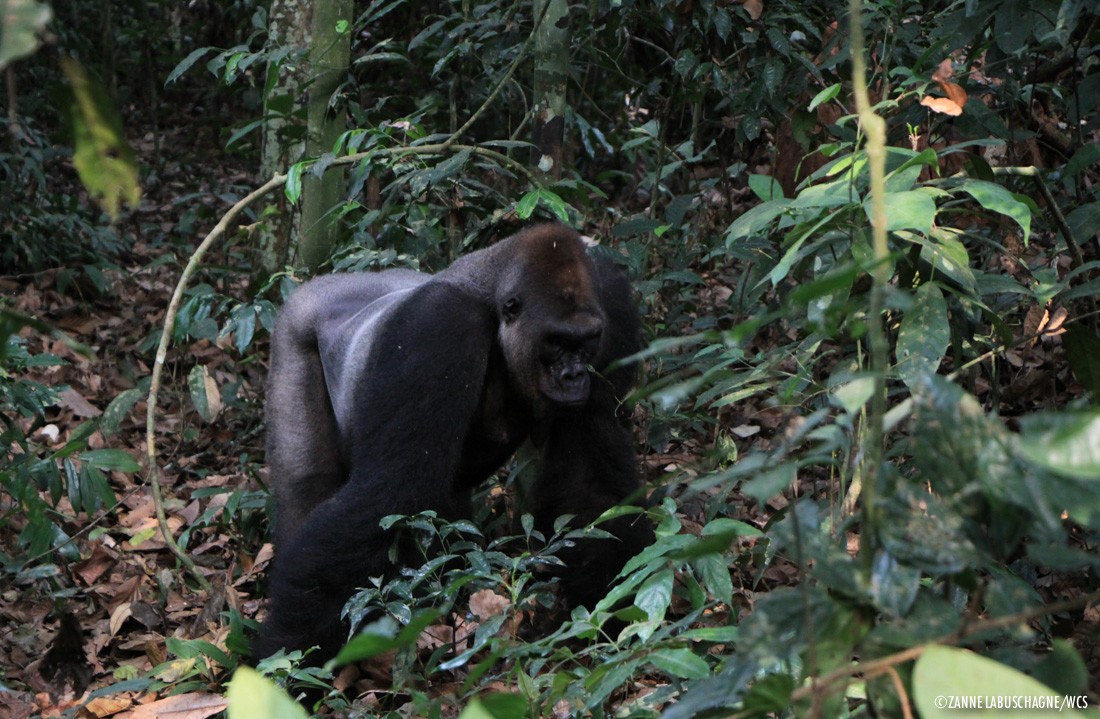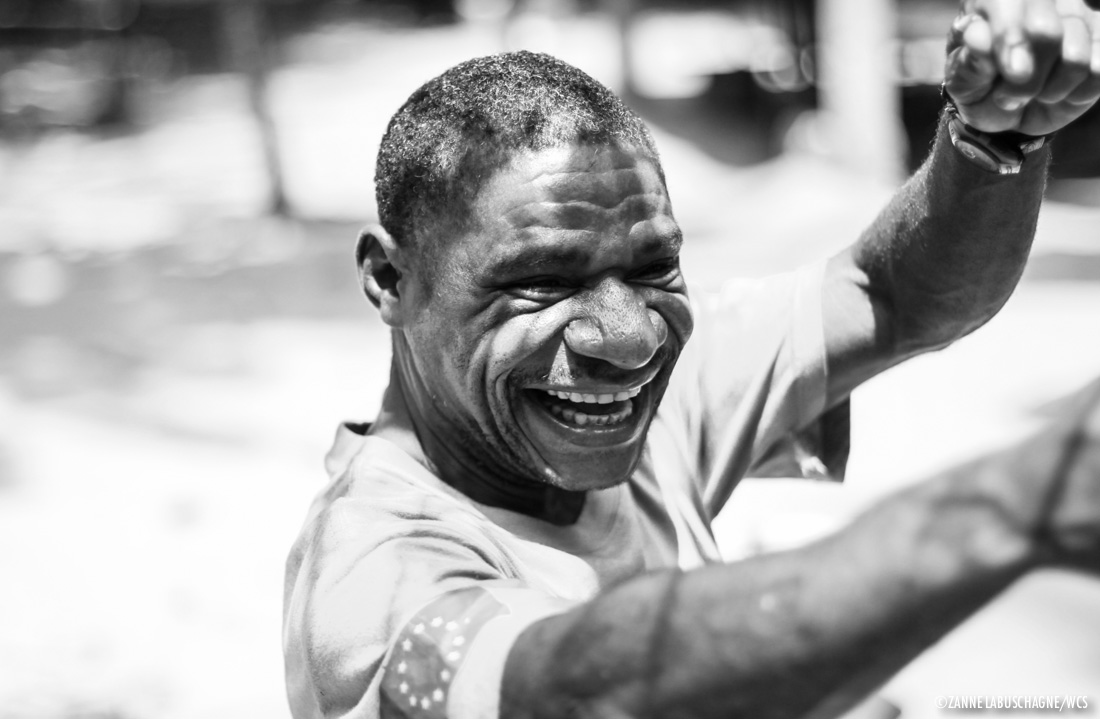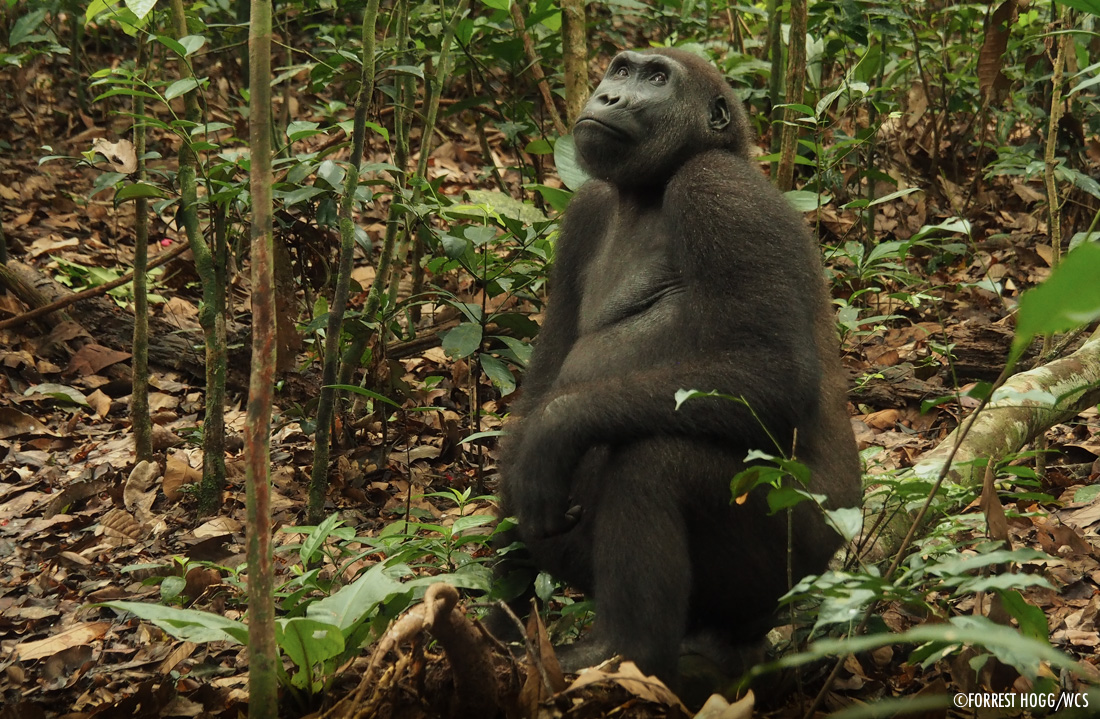
Kingo “the loud voice”
The serenity of the forest is punctuated by the crash of figs as they hit the leaf litter on the forest floor, sent plummeting down by several gorillas feeding in the canopy 20 meters overhead. The rest of the family group is scattered in the undergrowth around us. Kingo, the group’s silverback, lies in front of us in a very human-like, relaxed pose: one arm behind his head, elbow to the sky as he inspects the fingernails of his free hand. We walked for an hour to reach this group of habituated western lowland gorillas, setting out from the Mondika Research Center at 6 AM with a group of trackers and researchers who do this everyday, passing the day on the edges of the group recording data on their feeding behavior and social interactions. The trackers’ skills are extraordinary, leading us along a trail invisible to the untrained eye, from the gorillas sleeping place of the previous night through thick forest to the area we found them feeding in about a kilometre away.
”The trackers’ skills are extraordinary, leading us along a trail, invisible to the untrained eye, from the gorillas sleeping place of the previous night through thick forest to the area we found them feeding in about a kilometre away.
Kingo’s group was the first group of western lowland gorillas to have been habituated in the Ndoki landscape. Kingo, meaning “the loud voice” in Lingala, took three years to be habituated from 1998 to 2001. In 2007 tourists started visiting the family group which now continues with their daily routine seemingly oblivious of the visiting tourists and researchers. The trackers occasionally make a clicking noise to re assure the massive apes of our non-threatening presence. Otherwise the only noises are those of the forest and the feeding gorillas. The opportunity to observe these amazing animals in this way is truly a life changing experience. But beyond this it gives researchers the opportunity to collect long-term data and gain insight into the behavior of this threatened species.

Gorillas throughout Africa face a very real risk of extinction. Knowledge gained from groups like Kingo’s are therefore of great importance for the conservation of gorilla populations, especially if isolated populations reach a critically low threshold and must be captive bred or re-introduced to reinforce population numbers and genetic diversity. The socio-ecological data collected from the two groups of habituated gorillas is also used to increase our knowledge of the behaviour of our close relatives. This data was recently used in a study to better understand the bizarre humming noise some gorillas make while feeding.
”The opportunity to observe these amazing animals in this way is truly a life changing experience. But beyond this it gives researchers the opportunity to collect long-term data and gain insight into the behavior of this threatened species.
Fortunately, the Republic of Congo still maintains healthy populations of western lowland gorillas, with some of the highest population densities of this species located in the forests of northeastern Congo. For now the major benefits of the habituation program and research center come through the attraction of tourists to this remote region of Congo. Tourism in the region is an important source of revenue for local communities through job creation, and the injection of tourists’ revenues back into community development projects such as the construction of a clinic and a school in Bomassa village. WCS Congo is determined to promote responsible eco-tourism by putting in place strict health and safety protocols for tourist visits to habituated gorilla groups to prevent the transfer of disease between tourists and our close ape relatives and with emphasis placed on developing activities and accommodation that leave little footprint in the pristine rainforest of northern Congo. At present WCS has suspended tourism activities while improvements and refurbishments are made to the tourism facilities. The aim is to expand and improve the ecotourism program in the landscape, which will bring greater benefits to local communities as well as boost conservation in the area.


